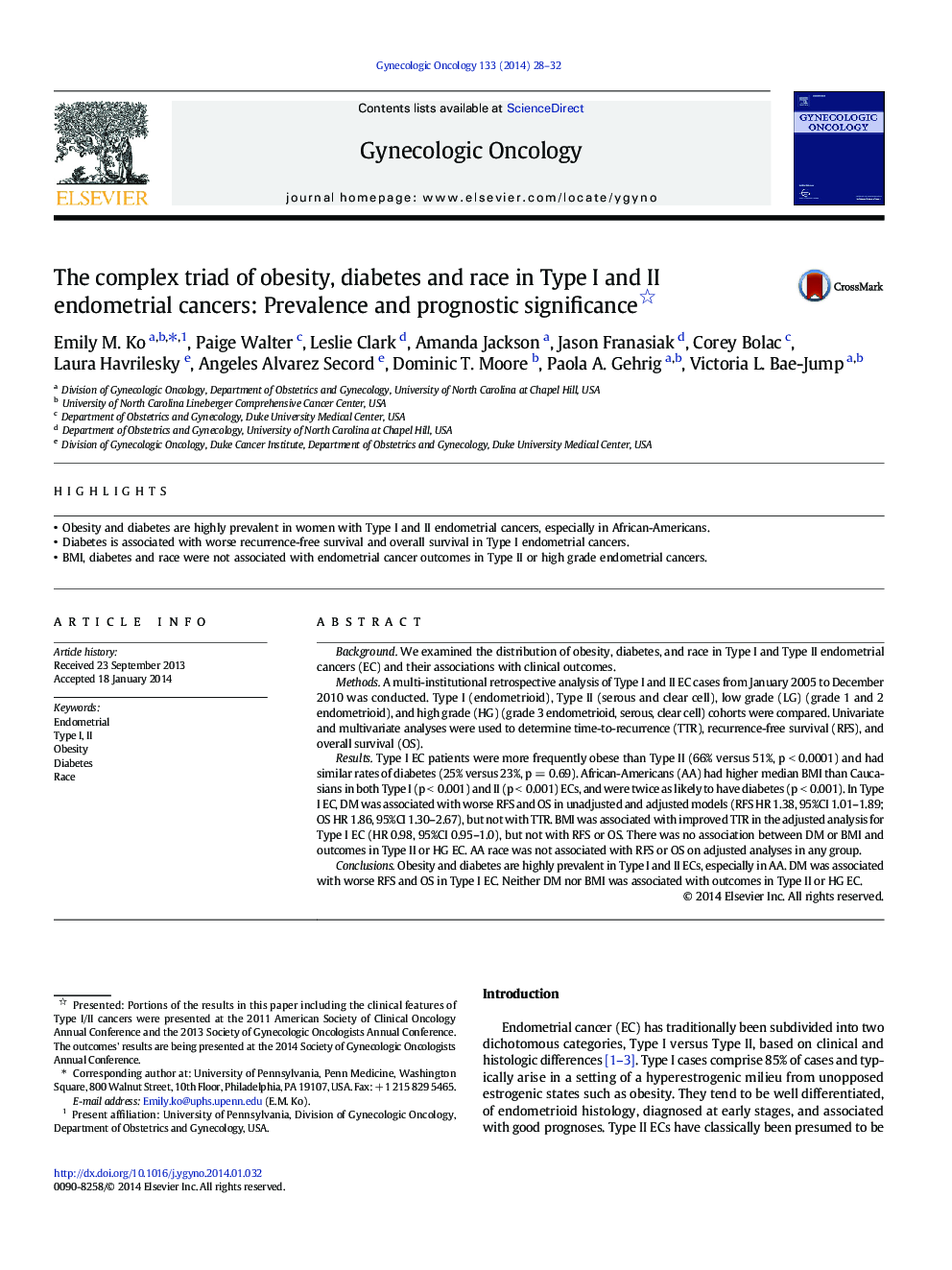| کد مقاله | کد نشریه | سال انتشار | مقاله انگلیسی | نسخه تمام متن |
|---|---|---|---|---|
| 3946759 | 1254366 | 2014 | 5 صفحه PDF | دانلود رایگان |

• Obesity and diabetes are highly prevalent in women with Type I and II endometrial cancers, especially in African-Americans.
• Diabetes is associated with worse recurrence-free survival and overall survival in Type I endometrial cancers.
• BMI, diabetes and race were not associated with endometrial cancer outcomes in Type II or high grade endometrial cancers.
BackgroundWe examined the distribution of obesity, diabetes, and race in Type I and Type II endometrial cancers (EC) and their associations with clinical outcomes.MethodsA multi-institutional retrospective analysis of Type I and II EC cases from January 2005 to December 2010 was conducted. Type I (endometrioid), Type II (serous and clear cell), low grade (LG) (grade 1 and 2 endometrioid), and high grade (HG) (grade 3 endometrioid, serous, clear cell) cohorts were compared. Univariate and multivariate analyses were used to determine time-to-recurrence (TTR), recurrence-free survival (RFS), and overall survival (OS).ResultsType I EC patients were more frequently obese than Type II (66% versus 51%, p < 0.0001) and had similar rates of diabetes (25% versus 23%, p = 0.69). African-Americans (AA) had higher median BMI than Caucasians in both Type I (p < 0.001) and II (p < 0.001) ECs, and were twice as likely to have diabetes (p < 0.001). In Type I EC, DM was associated with worse RFS and OS in unadjusted and adjusted models (RFS HR 1.38, 95%CI 1.01–1.89; OS HR 1.86, 95%CI 1.30–2.67), but not with TTR. BMI was associated with improved TTR in the adjusted analysis for Type I EC (HR 0.98, 95%CI 0.95–1.0), but not with RFS or OS. There was no association between DM or BMI and outcomes in Type II or HG EC. AA race was not associated with RFS or OS on adjusted analyses in any group.ConclusionsObesity and diabetes are highly prevalent in Type I and II ECs, especially in AA. DM was associated with worse RFS and OS in Type I EC. Neither DM nor BMI was associated with outcomes in Type II or HG EC.
Journal: Gynecologic Oncology - Volume 133, Issue 1, April 2014, Pages 28–32